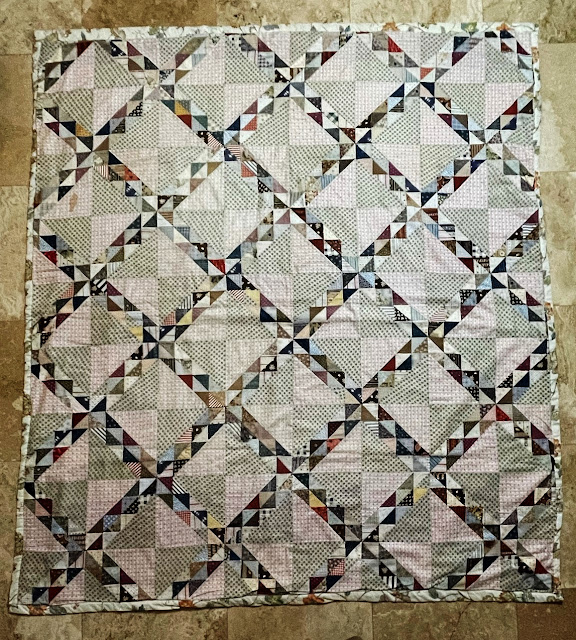Thought I'd share another quilt from my grandmother's house. It's creator and the date of its construction are unknown. The quilt top design is all triangles that form a simple lattice on point, or on the diagonal. The quilter added interest to the centers by using two subtle fabrics, a pink and a grey, against which the lattice pops.
If I had to take a guess, I would say the fabrics used in the quilt top are from the Depression era; simple, small patterns which may have been more vibrant at one time but now wear a softer hue. Of course that doesn't necessarily mean it was pieced in that time frame. Quilters are notorious hoarders of fabric and it's not uncommon for fabrics to wait in the "stash" for years before they find a place in a project.
What's really cool about vintage quilts is that, in the absence of any documentation, they give us the opportunity to do a little sleuthing and hypothesizing. One interesting thing about this quilt is its backing. There are no seams in the back, it is one length of fabric for this a queen/full sized quilt. It appears to be a sheet, and judging by the pattern I would guess it was a 60's or 70's textile.
The contrast in fabrics suggests that maybe one quilter pieced it together and put it aside. Then another industrious sewer found it in a closet and decided to finish it off, perhaps a generation or two later. There is no quilting on it; it's not even tied. The top floats over some sort of batting and this large print backing.
So many questions arise. Why wasn't it finished initially? Was the backing a used/recycled sheet, implying the quilter finishing it was using whatever was handy? Or was a sheet bought especially for this backing? And why go to the trouble of putting it together if you weren't going to tack it down with quilting to make it more durable for every day use?
When I first came across this quilt, I thought what a shame that this vintage fabric top had been "ruined" by finishing it off in this way. Now I've come to appreciate that it represents history. On one level it has family history, even if I'm not fully aware of what that history is. But in a larger sense it embodies a small history of textiles.
It's not perfect, but that's kind of charming.




.jpg)

Comments
Post a Comment